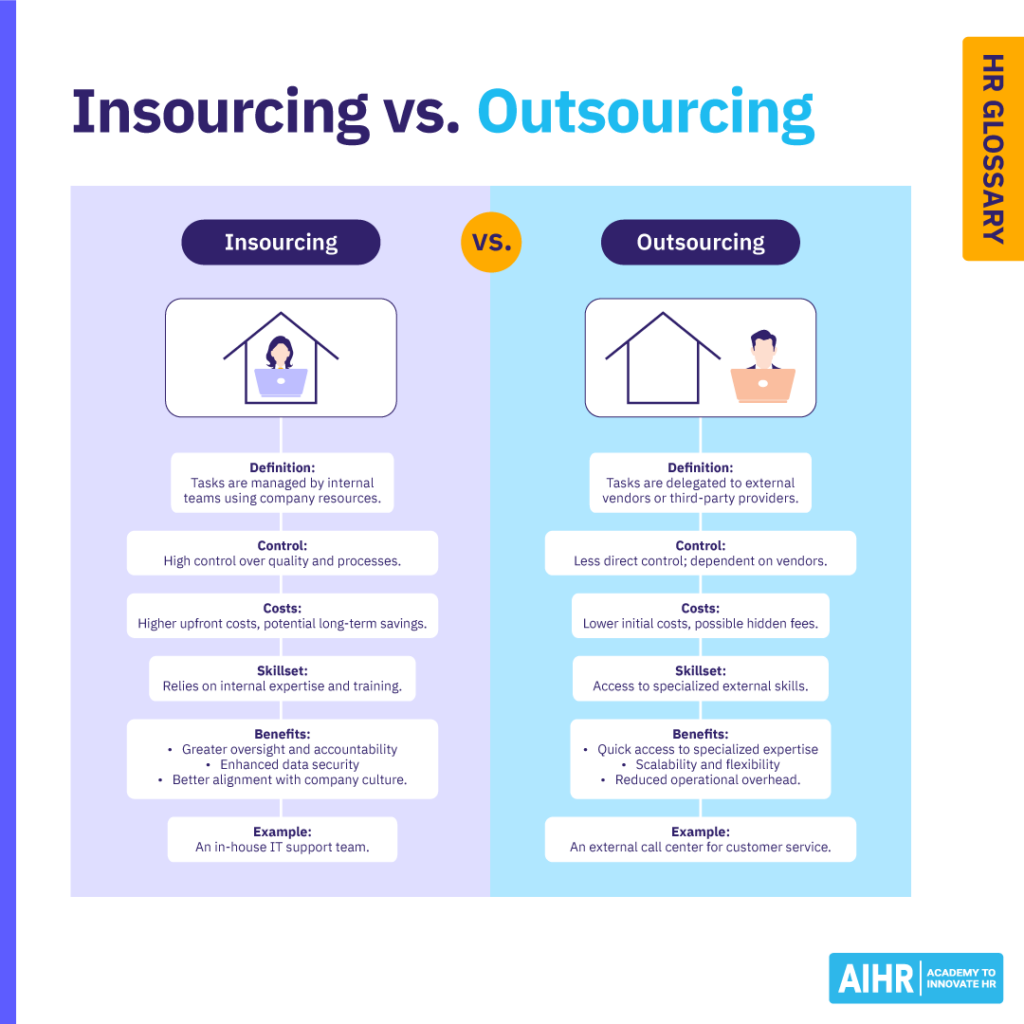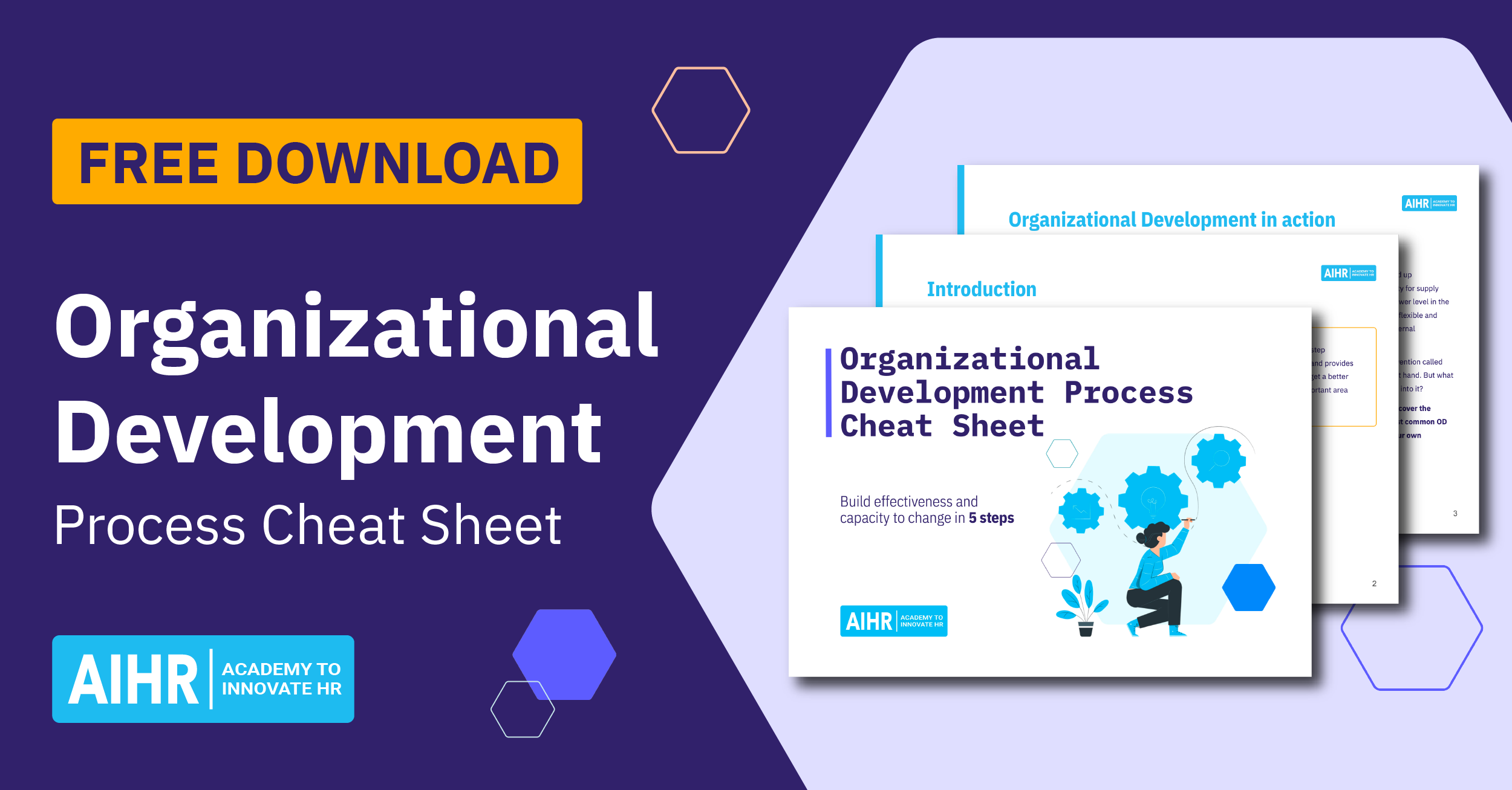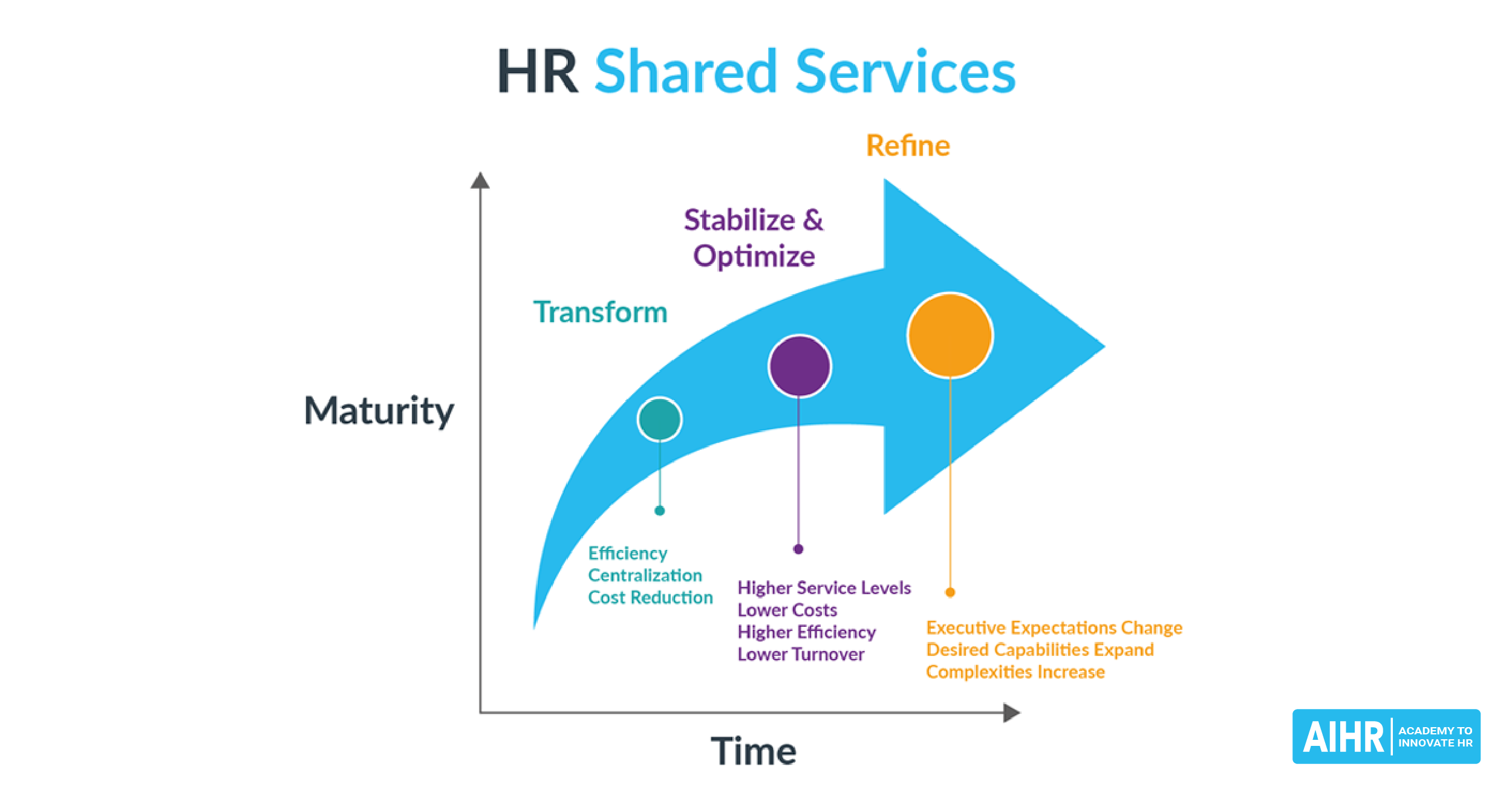Insourcing
What is insourcing?
Insourcing is the practice of assigning tasks, projects, or business operations to internal staff and resources rather than outsourcing them to external organizations or third-party vendors. This approach allows a company to maintain greater control over processes, quality, and outcomes while leveraging existing talent and infrastructure.
Insourcing can involve bringing previously outsourced tasks back in-house or assigning new responsibilities to internal teams instead of seeking external help. It’s often used when a company wants to improve quality control, reduce costs in the long term, protect sensitive data, or develop in-house expertise in a critical area.
For example, a company might insource its IT support functions instead of relying on an external IT service provider, enabling closer alignment with business goals and faster response times.
How does insourcing work?
Insourcing begins with an assessment of whether an organization has the internal capabilities, skills, and infrastructure needed to successfully manage key processes or projects. This evaluation typically involves analyzing potential risks, resource availability, budget, capacity, and technical infrastructure to determine whether insourcing is a viable approach.
Once the decision to insource is made, the organization typically follows these steps:
- Conducting a risk assessment: Identify potential financial, quality, and security risks and create strategies to address or minimize them.
- Designing a transition plan: Develop a phased roadmap to smoothly transition tasks from external providers to internal teams.
- Identifying or hiring staff: Assess current employee capabilities, provide necessary training, or hire new talent to fill skills gaps.
- Investing in infrastructure and technology: Acquire or upgrade equipment, software, and other resources needed to support insourced operations.
- Developing new processes: Design and document workflows, train relevant employees, and ensure everyone understands the latest procedures.
- Evaluating insourcing performance: Establish key performance metrics and regularly monitor results to ensure goals are being met effectively.
Learn how to properly handle insourcing and outsourcing
Knowing when to insource and outsource is a crucial HR skill. To master it, you must be adept at analyzing costs, expertise, efficiency, and business goals.
AIHR’s Organizational Development Certificate Program will teach you the skills you need to assess organizational needs, design effective structures, and implement change initiatives, enabling informed decisions on insourcing versus outsourcing.
Insourcing vs. outsourcing
Insourcing and outsourcing are two distinct strategies organizations use to manage tasks, projects, or services. The primary difference lies in whether the work is handled internally or by an external party. Here is an overview of the main differences between these two approaches:
Definition
Tasks are managed by the company’s internal team using its own resources.
Tasks are delegated to external vendors, contractors, or third-party service providers.
Control
High level of control over processes, quality, and operations.
Less direct control due to dependence on third-party service providers.
Costs
Higher upfront costs (e.g., hiring, training, infrastructure) but potential long-term savings.
Lower initial costs but may include hidden fees and long-term obligations.
Skill set
Highly dependent on internal skills and competencies.
Highly specialized skills and capabilities not available internally.
Example
A company builds an in-house IT support team.
A company hires an external call center for customer service.
When to choose insourcing or outsourcing
- Insourcing: Best for tasks requiring tight control, confidentiality, or alignment with company culture.
- Outsourcing: Suitable for non-core activities, cost reduction, or accessing specialized expertise quickly.
Many companies use a hybrid approach, combining insourcing for critical operations and outsourcing for tasks requiring scalability or specialized skills.

Advantages and disadvantages of insourcing
Before deciding on insourcing, consider the following benefits and limitations:
Advantages
- Greater control: When tasks are managed internally, organizations have more oversight over processes, quality, and timelines. This allows for quicker decision-making and better alignment with company goals.
- Long-term cost efficiency: While insourcing often requires higher upfront investments, it can reduce ongoing operational costs in the long run.
- Better data security: Keeping strategies, processes, and sensitive data in-house reduces the risks associated with sharing confidential information with third-party providers.
- Alignment with company culture: Internal teams are more familiar with the company’s values, culture, and goals, leading to better integration of business strategies.
- Improved communication: Teams working within the same organization can collaborate more effectively, reducing misunderstandings and delays often seen with external vendors.
Disadvantages
- Limited expertise: Internal teams may lack the specialized skills or experience external providers bring, leading to potential organizational knowledge or efficiency gaps.
- Time-consuming: Building internal capabilities, training staff, and setting up processes can take considerable time before delivering measurable results.
- Higher upfront costs: Insourcing often requires significant initial investment in hiring, training, infrastructure, and technology, which can strain budgets in the short term.
- Increased operational burden: Managing everything in-house can place additional pressure on internal teams, potentially leading to burnout or reduced productivity.
- Potential disruption: Insourcing can potentially disrupt existing teams, departments, internal processes, and procedures. If unsuccessful, it could also lower employee morale.
Example of insourcing
Here is an example of an insourcing approach adopted by an organic skincare company:
Spain-based Manda Cosmetics decided to insource its product packaging design after several disappointing projects with an external provider. The company also wanted to reduce its packaging waste by limiting plastic and increasing the use of recycled materials. Manda already had an in-house design team but needed to improve its competence in sustainable design.
The company decided to build cross-functional teams with design, product development, and sustainability expertise to explore innovative, eco-friendly packaging solutions. Over time, this in-house team was able to reduce packaging waste and improve its brand presence and reputation in over 20 markets.
HR tip
Insourcing is not an ‘all or nothing’ decision. Consider a hybrid approach if certain aspects of insourcing result in lower quality, increased costs, or slower response times. Choose a third-party provider to outsource tasks that cannot be successfully done internally. Some organizations may bring in an external agency or consultants to initially plan and develop insourcing capabilities.
Types of insourced activities
Here are some other tasks and functions companies commonly insource:
- IT services: Organizations often insource software development, cybersecurity, data analytics, and network management to reduce security risks and maintain tighter control over sensitive data.
- Customer support: In-house customer service teams enable companies to better manage customer perception, improve satisfaction, and maintain consistency in brand communication.
- Human resources: Businesses may build internal expertise in recruitment, payroll processing, training, benefits administration, and compliance to streamline processes and align HR practices with organizational culture.
- Research and development (R&D): Insourcing R&D functions allows companies to develop proprietary technology, products, or services. This drives innovation, protects intellectual property, and enhances competitiveness.
- Manufacturing: Bringing manufacturing, product development, supply chain management, and logistics in-house helps ensure higher quality standards, greater efficiency, and potentially reduced costs over time.
- Strategic planning and decision-making: Companies often keep strategic planning in-house to maintain full control over their strategic direction and ensure alignment with core values, mission, and long-term business objectives.
- Legal services: Some organizations insource legal tasks (e.g., contract management, compliance oversight, and handling sensitive company information) to enhance confidentiality, reduce external risks, and ensure better alignment with internal policies.
FAQ
Insourcing is the practice of assigning tasks, projects, or operations to a company’s internal team rather than outsourcing them to external vendors. It leverages in-house resources, skills, and infrastructure to maintain control, ensure quality, and align processes with business objectives.
Companies insource to maintain greater control over processes, improve quality, protect sensitive information, reduce long-term costs, and build internal expertise. It also allows for better alignment with company culture, faster decision-making, and more seamless collaboration across teams.
Common insourced functions include IT services (e.g., software development, cybersecurity), customer support, human resources (e.g., recruitment, payroll, training), R&D, manufacturing, strategic planning, and legal services.









